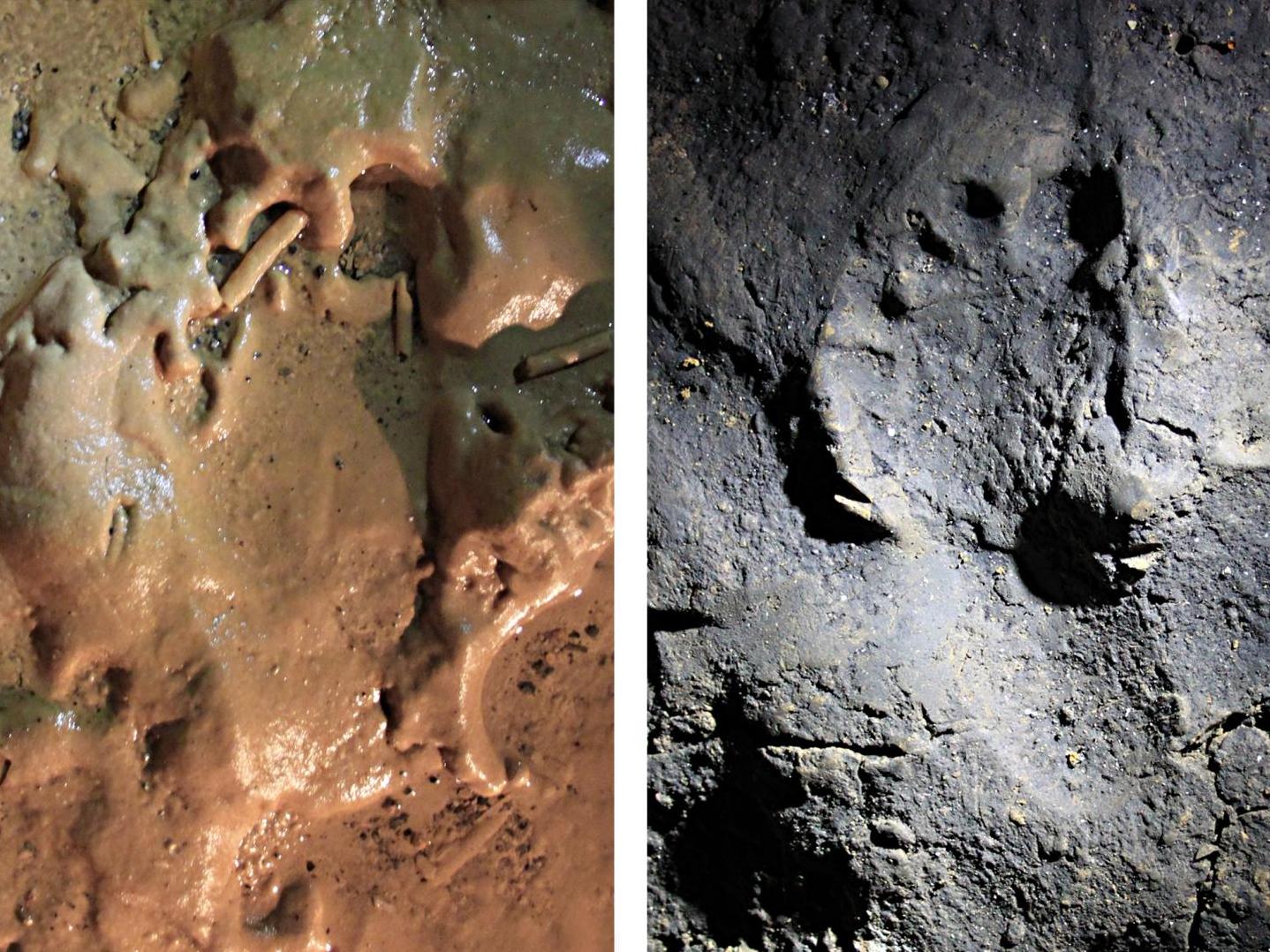14,000-year-old cave footprints provide snapshot of Stone Age family day out
‘Most likely they were pushed into the cave by simple curiosity and a sense of wonder,’ says Marco Romano
Your support helps us to tell the story
From reproductive rights to climate change to Big Tech, The Independent is on the ground when the story is developing. Whether it's investigating the financials of Elon Musk's pro-Trump PAC or producing our latest documentary, 'The A Word', which shines a light on the American women fighting for reproductive rights, we know how important it is to parse out the facts from the messaging.
At such a critical moment in US history, we need reporters on the ground. Your donation allows us to keep sending journalists to speak to both sides of the story.
The Independent is trusted by Americans across the entire political spectrum. And unlike many other quality news outlets, we choose not to lock Americans out of our reporting and analysis with paywalls. We believe quality journalism should be available to everyone, paid for by those who can afford it.
Your support makes all the difference.A Stone Age family of five crawled through a narrow Italian cave 14,000 years ago because they were curious about what was inside, according to a new study. They carried makeshift torches and wooden sticks to guide them through the darkness – and may even have brought their dog in too.
Researchers analysed the ancient tracks left in a layer of clay inside a deep cave of Bàsura in the Toirano cave complex in northern Italy.
It is the first time crawling has been documented in ancient humans, according to researchers from the University of Witwatersrand in South Africa.
Around 180 prints were made by these curious prehistoric explorers who crawled through the low cave using their hands, knees and the balls of their feet. The youngest child was probably only two years old, and would have been following two older siblings aged around six and 11.
The family walked close to the side of the cave and have left charcoal-smudged handprints on the wall. The children picked up mud from the floor and splattered it on the wall with their fingers, according to the study published in eLife.
“Most likely they were pushed into the cave by simple curiosity and a sense of wonder for unexplored places,” first author Marco Romano, Postdoctoral Fellow at the University of the Witwatersrand, South Africa told Ars Technica.

Shortly after the family left the cave experts belive a stalactite fell, which blocked the inner chamber and meant the traces of their little trip was preserved.
In the 1950s it was opened up using dynamite. It was then that the human traces were found.
Scientists used modern dating methods and software to analyse the structure of the tracks. “Together, these approaches allowed us to construct a narrative of how the humans entered and exited the cave, and their activities once they were inside,” said Dr Romano.
“In our study, we wanted to see how ancient humans explored this fascinating cave system. Specifically, we set out to discover how many people entered the cave, whether they explored as individuals or as a group, their age, gender and what kind of route they took once inside the cave,” he said.
The findings suggest that young children were active group members during the Stone Age, even when carrying out dangerous activities.
Such excursions were made for work and pleasure. “Hunter-gatherers may therefore have been driven by fun activities during exploration, as well as simply the need to find food,” said Dr Romano.
Based on 3D models of knee prints, scientists believe the family were in good shape and probably did a lot of exercise as hunter gatherers.
They followed the cave for more than 150 metres. A pair of prints show the spot where the leader probably stood up tall and paused before deciding to continue. They were probably in the cave for just a matter of minutes.

Join our commenting forum
Join thought-provoking conversations, follow other Independent readers and see their replies
Comments